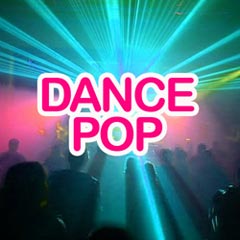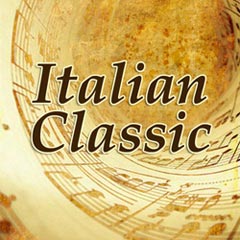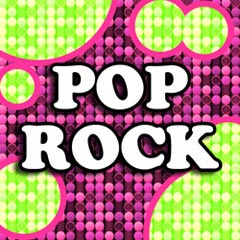Dance pop
ON AIR - PROGRAMMING
The marriage of commercial with dance, this is dance pop in its most pure and simple form, not looking to be anything more. Simple, memorable, danceable, and popular. the dance music is a mix of disco music and pop songs, born in the 1980s to be played in nightclubs and broadcast on the radio. Melody and catchy tunes are the core of this music genre.Moving and grooving, bump and grinding, pushing one's body to its limits. These are telltale signs of dance music and all it has come to represent. It is ingrained in the fabric of any celebration or festival. Whether it be the professional dancer, a passionate enthusiast, or simply someone wanting to have a good time shaking their booty on the dance floor, no matter what style you prefer to move toÑif it has a beat chances are it's daaance music! To some, dancing is an escape. A way of leaving everyday troubles behind as they enter into another world. For others, dance brings competition and challenges them to always become better. Whatever your interpretation may be something unifies us: we all love music that lets us let go! A playlist with dance music songs, from the 70s disco music till the 90s dance songs, here you can find a mix of all generation dance music.
The Rise of Dance Pop: A Blend of Pop and Disco Music
As the years advance, dance pop music is becoming more mainstream. The simple, catchy, and danceable tunes have become a significant part of the pop culture in the 21st century. The blend of disco music and pop songs, which first emerged in the 1980s, has grown to become the perfect genre for nightclubs, festivals, and broadcasting on the radio. It is no doubt that dance pop music has come a long way, and in this article, we will explore the genre's roots, its evolution, and what makes it so unique.
The marriage of commercial and dance is what makes dance pop in its most simple form. With its infectious beats and catchy melodies, it found its place among listeners who enjoy dancing and groove to the sound. Disco music is what inspired the birth of dance pop, and it is no wonder that this music genre has such an iconic sound. The likes of Michael Jackson, Madonna, and Janet Jackson started their careers in the 80s with dance pop music. The term dance pop first appeared in the early 1990s, becoming an instant buzzword in the music industry.
Dance pop is a fusion of sounds, blending disco and pop in one genre. Such a mix of sounds makes it easy to dance to and super memorable. The simple and repetitive tunes make dance pop music accessible to any music listener, and in turn, it became an excellent tool for radio music. Dance pop rapidly evolved from the 80s, where it was only played in nightclubs to being played on the radio in the 90s. Over time, the genre has also been incorporated into movies, TV shows, and commercials, thus increasing its popularity.
Dance pop has always been about dancing, mostly at nightclubs or discotheques. With the rise of festivals, dance pop became a staple for big crowds and outdoor events. In festivals, the energy and vibe offered by dance pop music is unlike any other genre, creating an unbeatable atmosphere. One of the reasons for dance pop's popularity in festivals is the live performances. It gives the audience an experience of a lifetime, which creates memorable moments. From the outfit, dance moves, to the energy on stage, it's no wonder that dance pop has become a must-have genre for any festival.
Dance pop has undergone changes from the 80s, but it still holds its core values: being simple, danceable, and memorable. The blending of sounds has enabled dance pop to adapt to different music trends, which is why it still has a place in the music industry today. It has undergone various remixes and collaborations with some of the biggest names in the music industry. The rise of social media and streaming platforms has further boosted dance pop's popularity. Listeners from across the world can access and stream dance pop songs with just a click, thus increasing its outreach.
Dance pop has grown exponentially in the music industry, becoming a genre that cuts across different cultures and ages. It provides an escape from everyday life and a platform for people to come together and express themselves through dance. The fusion of disco and pop music has given us some of the world's most memorable tunes. It's easy to learn the lyrics, sing along, and make dance moves that are quickly recognized on the dance floor. The rise of dance pop is not ending anytime soon, and one can only hope that it continues to give us the same energy and vibe that it's known for.
The Rise of Dance Pop: A Blend of Pop and Disco Music
As the years advance, dance pop music is becoming more mainstream. The simple, catchy, and danceable tunes have become a significant part of the pop culture in the 21st century. The blend of disco music and pop songs, which first emerged in the 1980s, has grown to become the perfect genre for nightclubs, festivals, and broadcasting on the radio. It is no doubt that dance pop music has come a long way, and in this article, we will explore the genre's roots, its evolution, and what makes it so unique.
The marriage of commercial and dance is what makes dance pop in its most simple form. With its infectious beats and catchy melodies, it found its place among listeners who enjoy dancing and groove to the sound. Disco music is what inspired the birth of dance pop, and it is no wonder that this music genre has such an iconic sound. The likes of Michael Jackson, Madonna, and Janet Jackson started their careers in the 80s with dance pop music. The term dance pop first appeared in the early 1990s, becoming an instant buzzword in the music industry.
Dance pop is a fusion of sounds, blending disco and pop in one genre. Such a mix of sounds makes it easy to dance to and super memorable. The simple and repetitive tunes make dance pop music accessible to any music listener, and in turn, it became an excellent tool for radio music. Dance pop rapidly evolved from the 80s, where it was only played in nightclubs to being played on the radio in the 90s. Over time, the genre has also been incorporated into movies, TV shows, and commercials, thus increasing its popularity.
Dance pop has always been about dancing, mostly at nightclubs or discotheques. With the rise of festivals, dance pop became a staple for big crowds and outdoor events. In festivals, the energy and vibe offered by dance pop music is unlike any other genre, creating an unbeatable atmosphere. One of the reasons for dance pop's popularity in festivals is the live performances. It gives the audience an experience of a lifetime, which creates memorable moments. From the outfit, dance moves, to the energy on stage, it's no wonder that dance pop has become a must-have genre for any festival.
Dance pop has undergone changes from the 80s, but it still holds its core values: being simple, danceable, and memorable. The blending of sounds has enabled dance pop to adapt to different music trends, which is why it still has a place in the music industry today. It has undergone various remixes and collaborations with some of the biggest names in the music industry. The rise of social media and streaming platforms has further boosted dance pop's popularity. Listeners from across the world can access and stream dance pop songs with just a click, thus increasing its outreach.
Dance pop has grown exponentially in the music industry, becoming a genre that cuts across different cultures and ages. It provides an escape from everyday life and a platform for people to come together and express themselves through dance. The fusion of disco and pop music has given us some of the world's most memorable tunes. It's easy to learn the lyrics, sing along, and make dance moves that are quickly recognized on the dance floor. The rise of dance pop is not ending anytime soon, and one can only hope that it continues to give us the same energy and vibe that it's known for.
2023-01-06
Dance music over the years
Every genre of music always has its rise and fall in terms of popularity. It also happened in disco music, which in the 1970s achieved its peak as the popular genres in many countries of the world...read more
Tag: dance music, dance songs, disco music, house
What are you thinking about?






